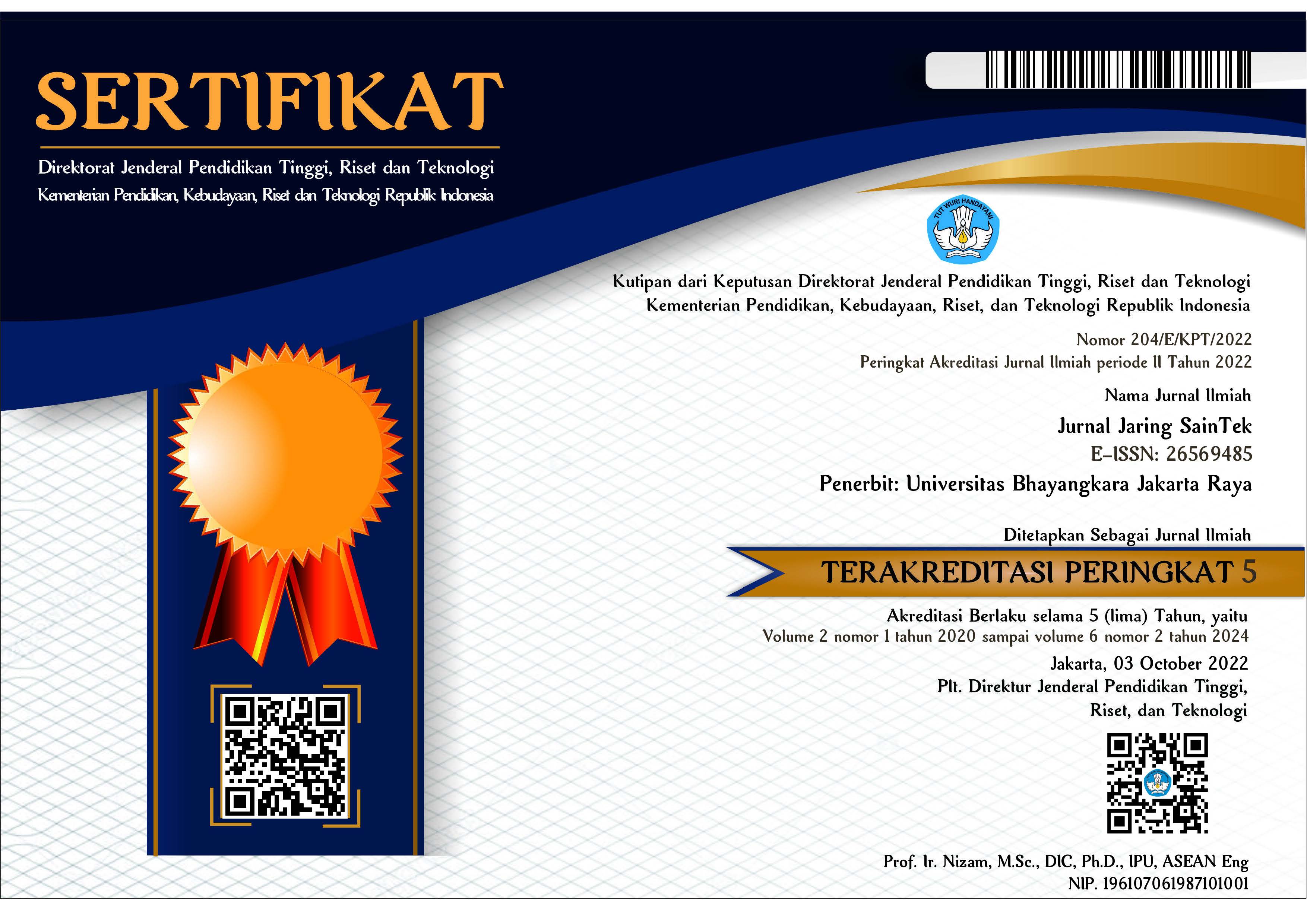Electrical Wing Prototype Anti Icing pada Pesawat Komersil
DOI:
https://doi.org/10.31599/jaring-saintek.v2i2.331Keywords:
anti icing, Control unit, De-Icing Boot, heating elementAbstract
The accumulation of ice on the aircraft's wings can cause a decrease in the aerodynamic properties of the aircraft, increase in weight, and it is difficult to control the aircraft so that it affects aircraft safety. Icing handling on aircraft is growing. One of the newest systems being developed is electrical anti-icing. Therefore, the researcher designed a prototype of an anti-icing electrical wing on a commercial aircraft with advantages in terms of maintenance and lighter components. The purpose of making this prototype is to design an anti-icing electrical wing in the form of a prototype and can be used as an anti-icing. The prototype consists of three parts, namely input, control unit, and heating element. The heating element working system is by attaching the heating element to the surface of the wing, so when the tool is active through the controls, the heating element will work with an indication of the LED on. After testing the Prototype electrical anti-icing function that has been made, it can be used as a de-icing that removes icing that has already frozen on the leading edge.
Downloads
References
[2] Ramdhani, I.(2012). Aplikasi Driver Relay ULN2003 Sebagai Penggerak Konveyor pada Otomatis Pengelompokkan Buku Menggunakan Inisialisasi Barcode.
[3] Daryanto. (2010). Keterampilan Kejuruan Teknik Elektronika. Satu Nusa: Bandung. Journal of Software, 6(11 SPEC. ISSUE), 2114–2120. doi:10.4304/jsw.6.11.2114-2120
[4] Villeneuve, E., Brassard, JD., & Volat,C. (2019). Effect of Various Surface Coatings on De-Icing/Anti-Icing Fluids Aerodynamic and Endurance Time Perfomances. Aerospace, 6(10), 114; doi.org/10.3390/aerospace6100114, (9 October 2019)
[5] Landau, K., Nadeau, S., Floch, TL., & Morency,F. (2017). Ergonomic Time anda Motion of Aircraft De-icing Work. Journal of Ergonomics,7(04), doi: 10.4172/2165-7556.1000204
[6] Battisti,L., Baggio, P., & Fedrizzi, R., (2006). Warm-Air Intermitternt De-Icing System for Wind Turbines. SAGE Journals, doi.org/10.1260/030952406779502713.
[7] Verma, PS., Raj, BSS., Sainath, S., & Rao,F. (2018). A Review on Current Methods of De-Icing and an Idea for Designing an Autonomous Robot for De-Icing. International Journal of Engineering &Technology,7(1.8) (2018) 182-187.
[8] Sarshar, MA., Song, D., Swarctz, C., Lee,J & Choi, CH. (2018). Anti-Icing or De-Icing: Icephobicies of Superhydrophobic Surface with Hierarchical Structures. ACS Publications, 2018, 34, 46, 13821–13827, doi.org/10.1021/acs.langmuir.8b02231.
[9] Uranai, S., Fukudome, K., Mamori, H., Fukushima,N & Yamamoto, M. (2020). Numerical Simulation of the Anti-Icing Performance of Electric Heaters for Icing on the NACA 0012 Airfoil. Aerospace, 7(9), 123, doi.org/10.3390/aerospace7090123
[10] Morita, K., Kimura, S., & Sakaue, H. (2020). Hybrid System Combining Ice-Phobic Coating and Electrothermal Heating for Wing Ice Protection. Aerospace, 7(8), 102, doi.org/10.3390/aerospace7080102








